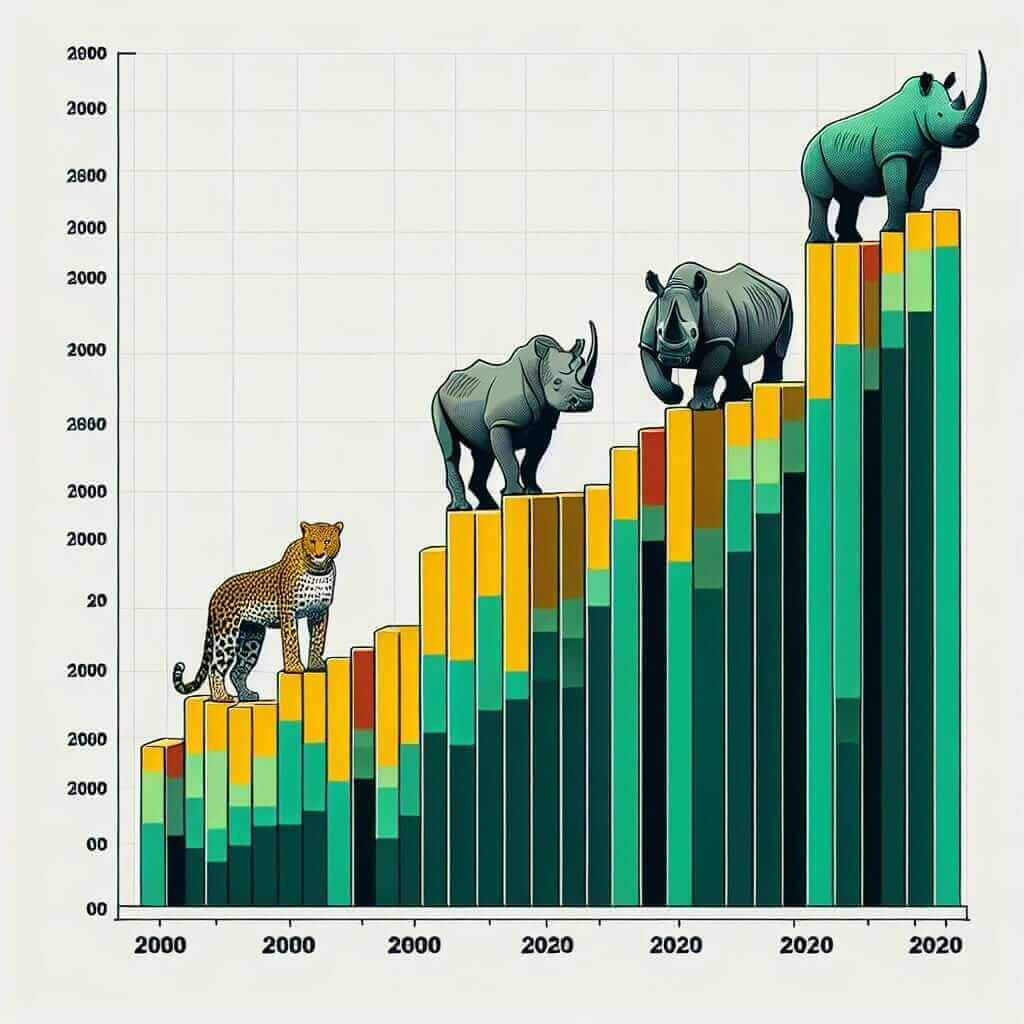The IELTS writing task 1 often presents data about global issues, and “Wildlife Conservation Efforts” is a recurring theme. This topic aligns with the increasing global awareness of environmental issues.
This article analyzes how “Wildlife Conservation Efforts” might appear in the IELTS Writing Task 1 and provides a sample answer to help you achieve a Band 7+ score.
Understanding the Task: Identifying Trends and Key Features
Let’s assume you encounter the following task:
**The table below shows the population trends of three endangered species from 2000 to 2020, alongside the conservation efforts implemented.
| Species | 2000 Population | 2010 Population | 2020 Population | Conservation Efforts Implemented |
|---|---|---|---|---|
| Amur Leopard | 30 | 35 | 50 | Anti-poaching patrols, habitat restoration, captive breeding program |
| Black Rhino | 2,500 | 2,800 | 3,200 | Trade ban on rhino horn, anti-poaching units, community conservation programs |
| Mountain Gorilla | 600 | 700 | 1,000 | Protected habitat zones, anti-poaching patrols, tourism revenue sharing with local communities |
Summarize the information by selecting and reporting the main features, and make comparisons where relevant.
Analyzing the Data and Planning Your Response
Before writing, identify key trends:
- Overall Increase: All three species show a positive population trend.
- Varying Success: The Amur Leopard shows the most significant percentage increase, while the Black Rhino population grows at a slower rate.
- Impact of Conservation: The specific efforts seem to correlate with population changes.

Sample Band 7+ Response
The table illustrates the population trends of three endangered species – the Amur Leopard, Black Rhino, and Mountain Gorilla – over two decades (2000-2020), highlighting the impact of various conservation efforts.
Overall, all three species experienced population growth, indicating the effectiveness of conservation initiatives. The Amur Leopard population, which stood at a mere 30 in 2000, increased to 50 by 2020, marking a significant 66% rise. This positive trend can be attributed to a multi-pronged approach involving anti-poaching patrols, habitat restoration, and a captive breeding program.
Similarly, the Black Rhino population rose from 2,500 to 3,200 during the same period. The implementation of a trade ban on rhino horn, along with dedicated anti-poaching units and community conservation programs, appears to have contributed to this positive development.
The Mountain Gorilla population also witnessed a steady increase, reaching 1,000 in 2020 from 600 in 2000. Establishing protected habitat zones, coupled with anti-poaching patrols and revenue sharing from tourism with local communities, likely played a crucial role in this growth.
In conclusion, the data underscores the importance of targeted conservation efforts in bolstering the populations of endangered species. (Word count: 198)
Key Takeaways for IELTS Writing Task 1
- Paraphrase: Avoid copying the question word-for-word. Use synonyms like “illustrates” instead of “shows.”
- Highlight Trends: Focus on the most significant changes and overall patterns.
- Compare and Contrast: Use comparative language like “similarly,” “in contrast,” or “while” to show differences and similarities.
- Link Data to Explanation: Connect the observed trends to the conservation efforts mentioned.
- Accuracy is Key: Ensure your data interpretation is accurate and supports your claims.
Vocabulary Focus:
- Bolstering (verb): /ˈboʊlstərɪŋ/ – supporting or strengthening
- Multi-pronged (adjective): /ˌmʌltiˈprɒŋd/ – having several different parts or aspects
- Dedicated (adjective): /ˈdɛdɪkeɪtɪd/ – devoted to a particular purpose
- Underscores (verb): /ˌʌndərˈskɔːrz/ – emphasizes
- Initiatives (noun): /ɪˈnɪʃətɪvz/ – new plans or actions
By following these tips and practicing your writing skills, you can confidently approach IELTS Writing Task 1 questions related to “Wildlife Conservation Efforts” and other data-driven topics.